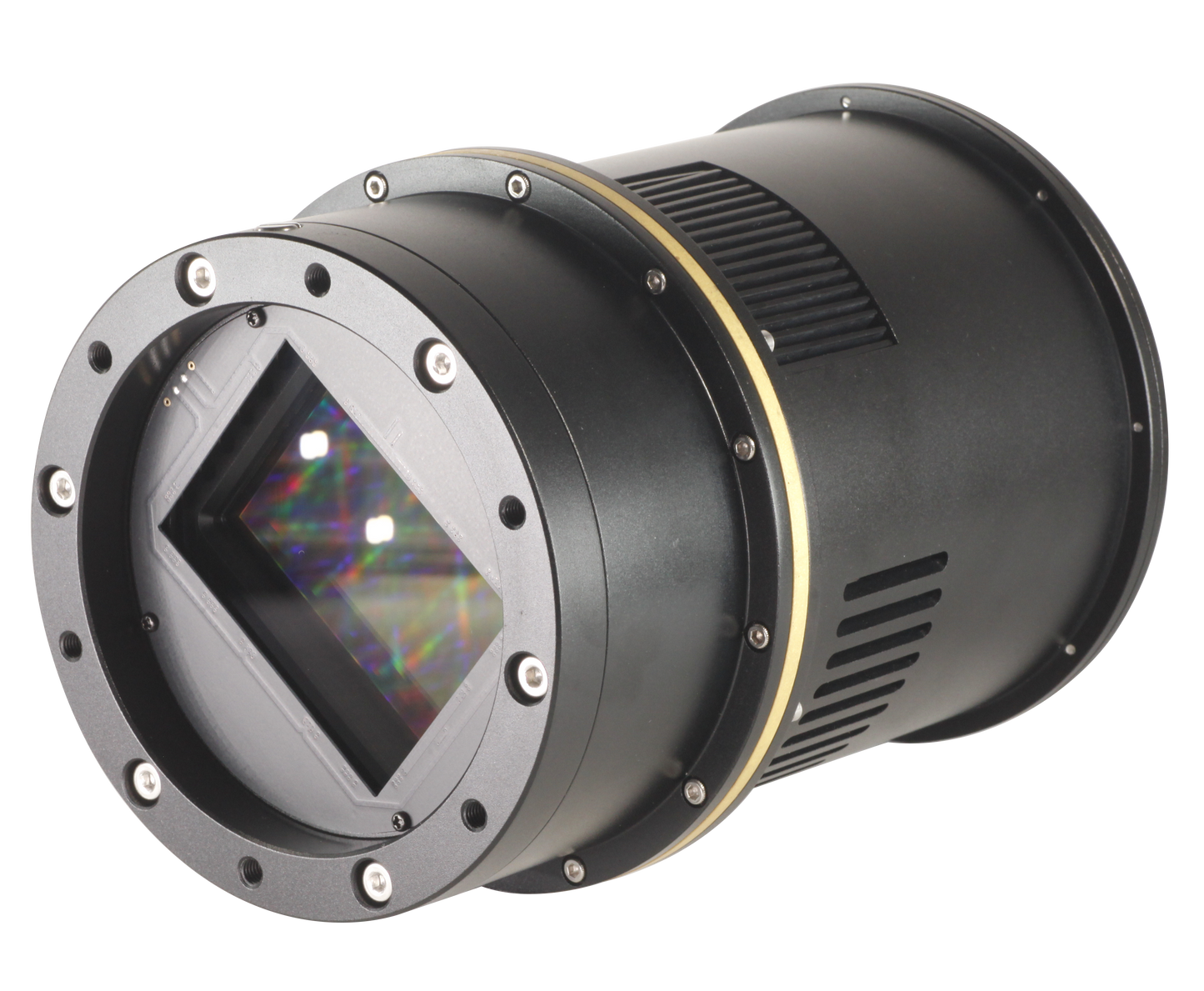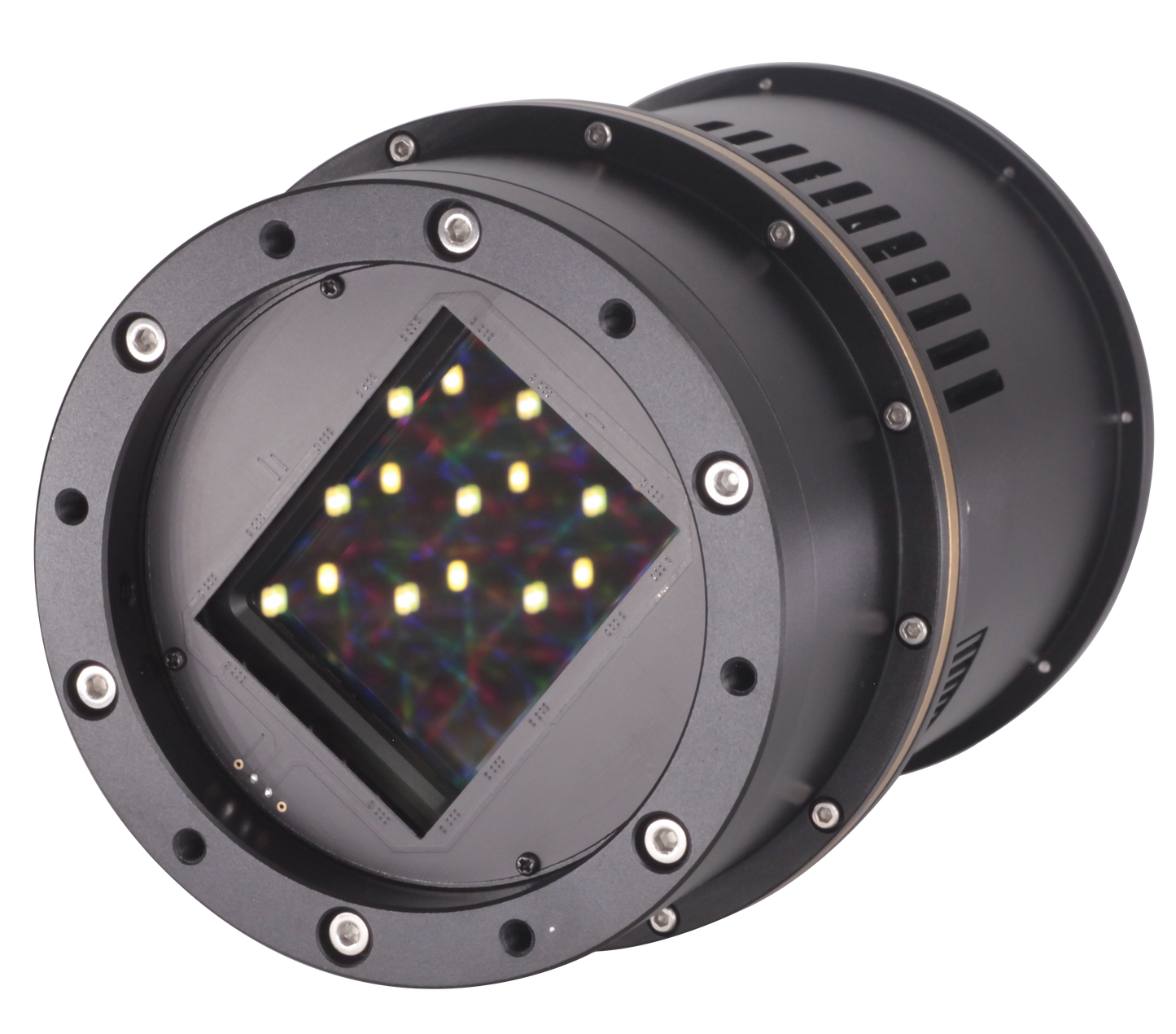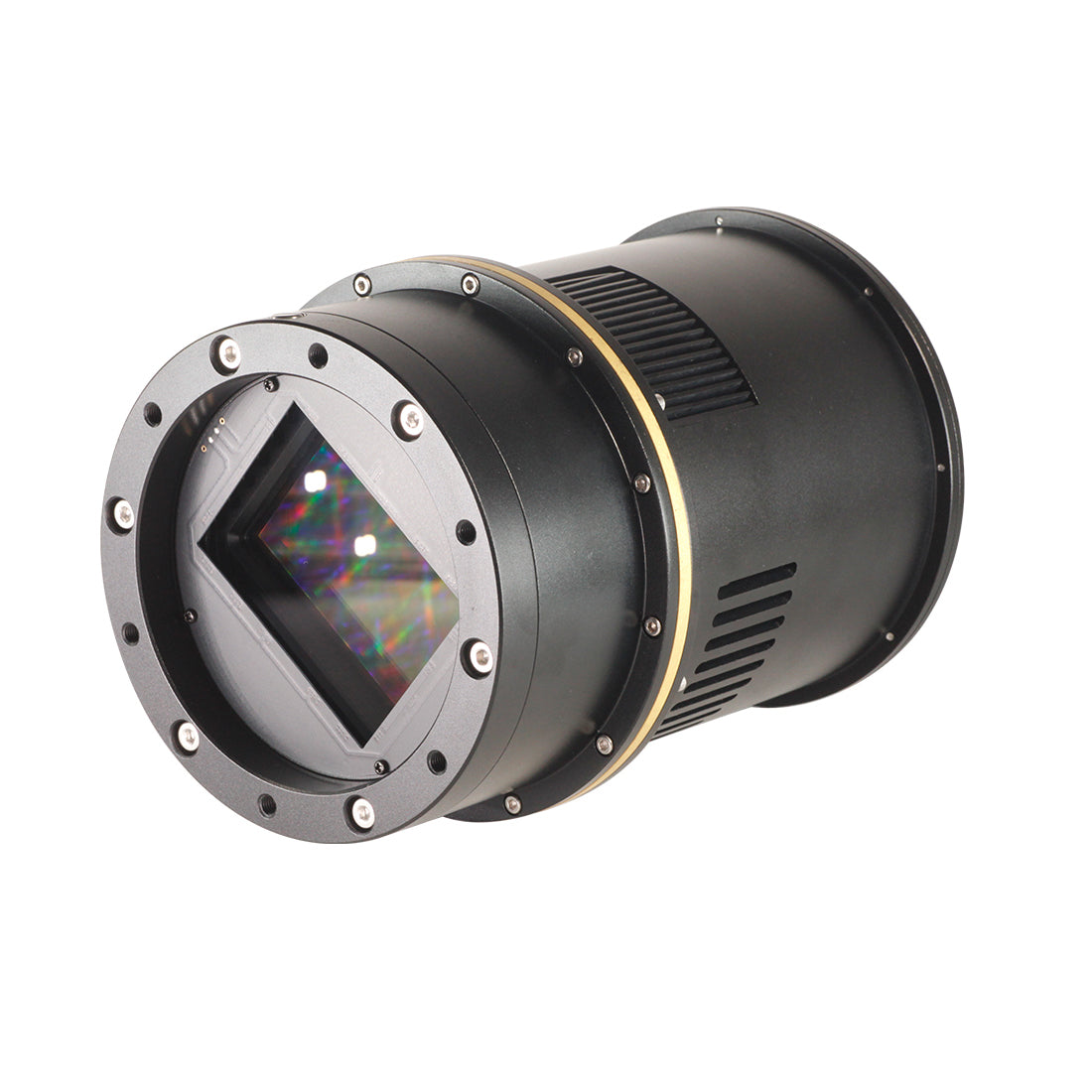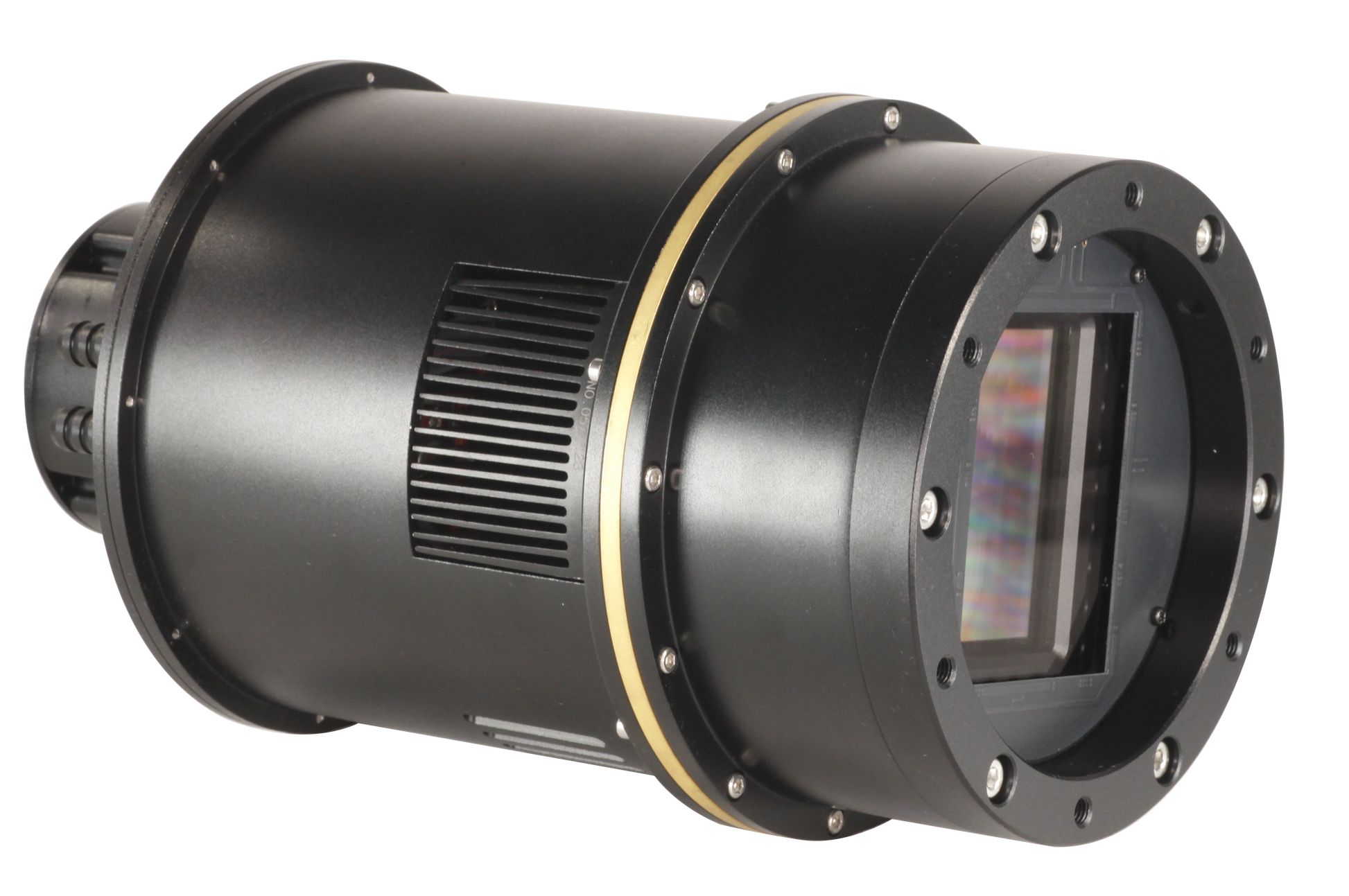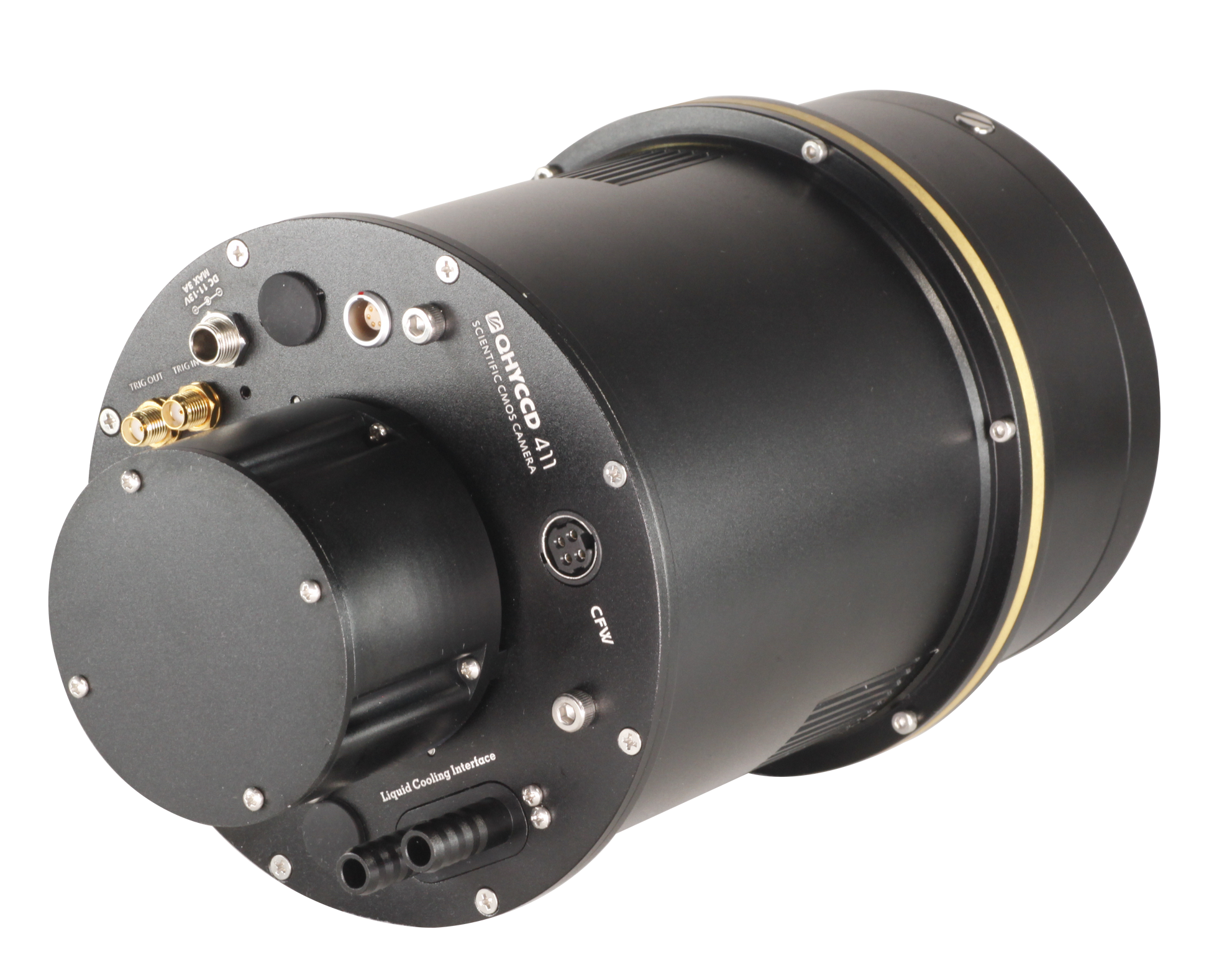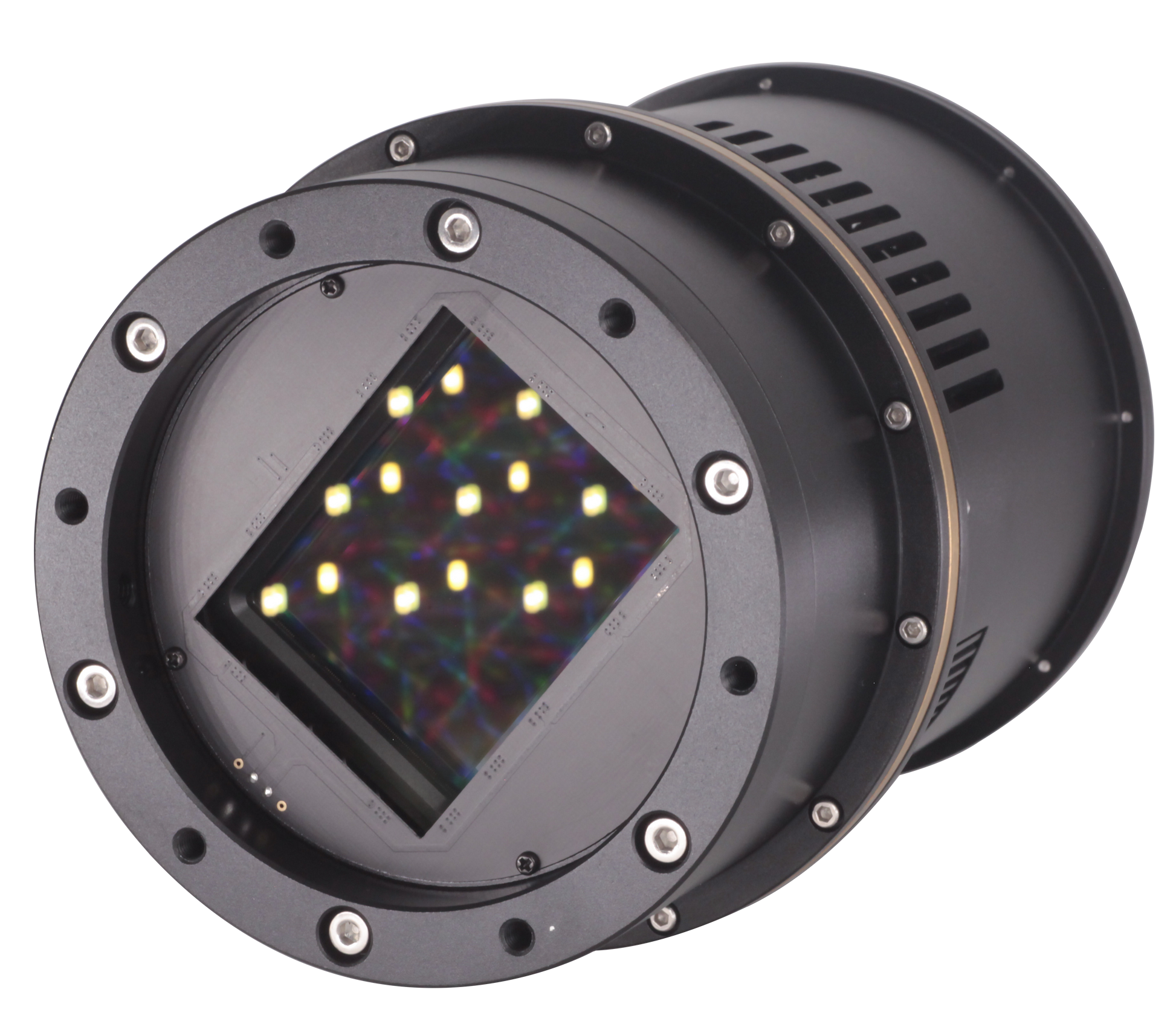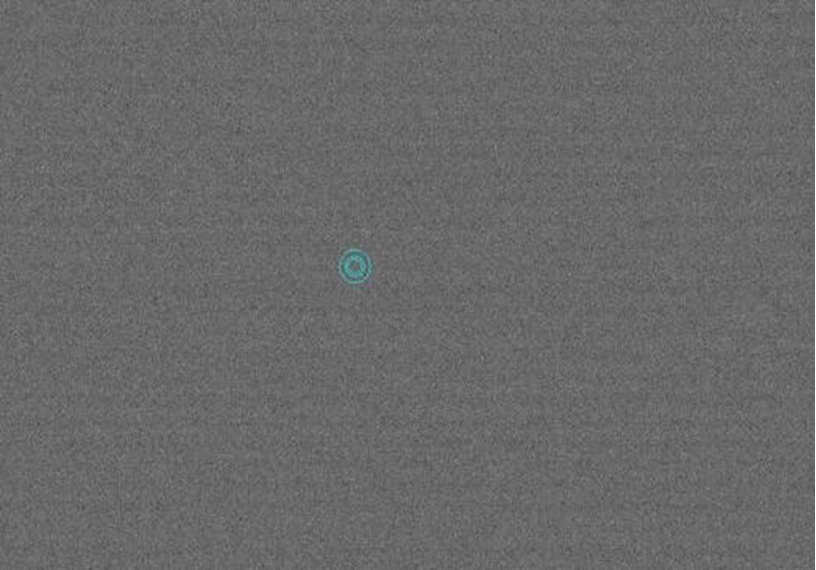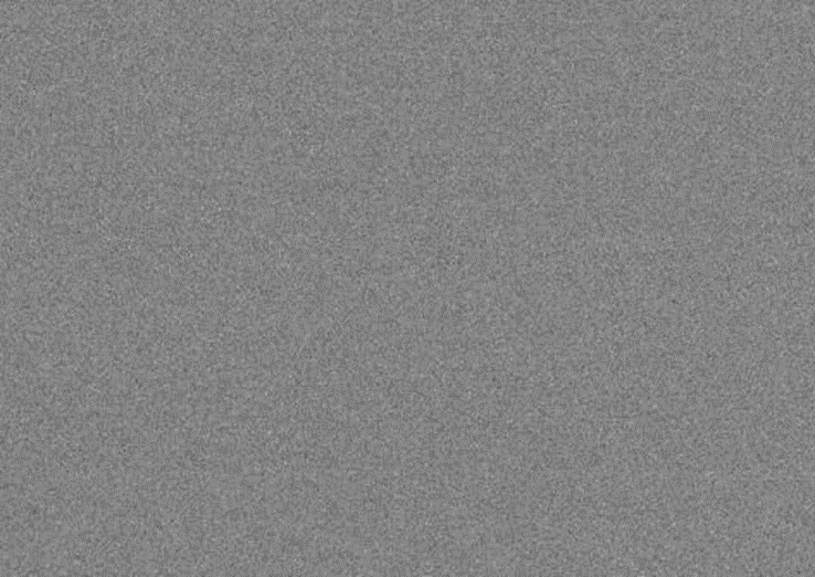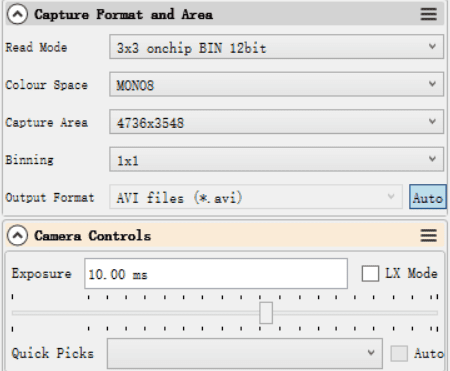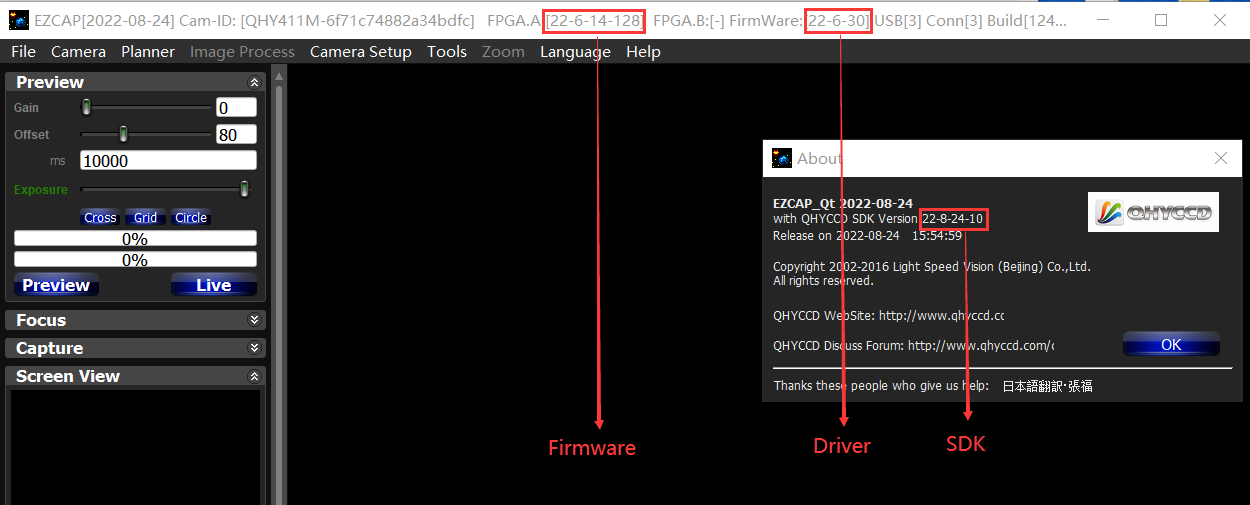QHY411
QHY411
Couldn't load pickup availability
The QHY411 is an impressive scientific CMOS camera designed for astrophotography and scientific imaging. Let’s explore its features:
-
Sensor and Resolution:
- The QHY411 utilizes the Sony IMX411 sensor, which is a 150-megapixel back-illuminated CMOS sensor.
- The sensor boasts a 14192 x 10640 pixel array with 3.76μm pixels.
- Its large sensor size of 54mm x 40mm allows it to capture detailed images of celestial objects.
- The QHY411 is available in both monochrome and color versions12.
-
Native 16-bit A/D:
- The QHY411 features a native 16-bit analog-to-digital converter (ADC) on-chip.
- This yields higher sample resolution and ensures that the system gain is less than 1e-/ADU with minimal sample error noise and very low read noise.
- The true 16-bit output provides excellent dynamic range and precision1.
-
Back-Illuminated Sensor (BSI):
- The back-illuminated CMOS structure improves the full well capacity of the QHY411.
- In back-illuminated sensors, light enters the photosensitive surface from the reverse side, allowing more photons to strike the photosensitive layer.
- This results in higher quantum efficiency, making the sensor more sensitive to capturing dim objects in the night sky1.
-
True RAW Data:
- Unlike some cameras that apply noise reduction or hot pixel removal to their RAW output, the QHY411 provides true RAW image output.
- This means the image comprises only the original signal, maintaining maximum flexibility for post-processing and scientific imaging applications1.
-
Zero Amplifier Glow:
- The QHY411 is also a zero amplifier glow camera, ensuring clean and accurate images even during long exposures.
- Its cooling system efficiently manages dark current noise, and the optic window includes a built-in dew heater to prevent condensation1.
-
Applications:
- The QHY411 is suitable for various applications, including astronomy imaging, space object survey, satellite tracking, and more.
- Its large full well capacity, low read noise, and high sensitivity make it an excellent choice for capturing the wonders of the cosmos1.
In summary, the QHY411 combines high resolution, low noise, and efficient cooling, making it a valuable tool for both amateur and professional astronomers. You can find more information about this camera on the QHYCCD website.
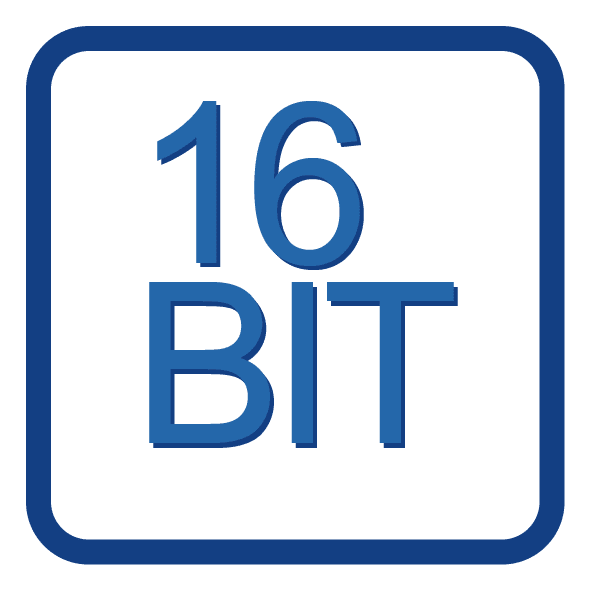 Native 16 bit A/D: The new Sony sensor has native 16-bit A/D on-chip. The output is real 16-bits with 65536 levels. Compared to 12-bit and 14-bit A/D, a 16-bit A/D yields higher sample resolution and the system gain will be less than 1e-/ADU with no sample error noise and very low read noise.
Native 16 bit A/D: The new Sony sensor has native 16-bit A/D on-chip. The output is real 16-bits with 65536 levels. Compared to 12-bit and 14-bit A/D, a 16-bit A/D yields higher sample resolution and the system gain will be less than 1e-/ADU with no sample error noise and very low read noise.
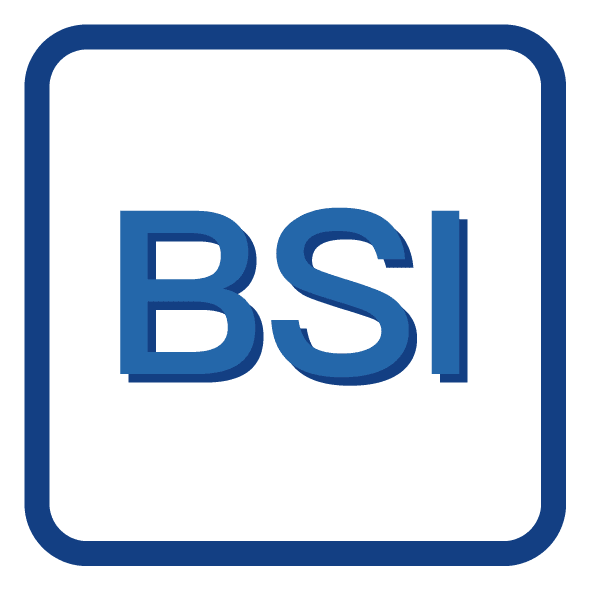 BSI: One benefit of the back-illuminated CMOS structure is improved full well capacity. This is particularly helpful for sensors with small pixels. In a typical front-illuminated sensor, photons from the target entering the photosensitive layer of the sensor must first pass through the metal wiring that is embedded just above the photosensitive layer. The wiring structure reflects some of the photons and reduces the efficiency of the sensor. In the back- illuminated sensor the light is allowed to enter the photosensitive surface from the reverse side. In this case the sensor’s embedded wiring structure is below the photosensitive layer. As a result, more incoming photons strike the photosensitive layer and more electrons are generated and captured in the pixel well. This ratio of photon to electron production is called quantum efficiency. The higher the quantum efficiency the more efficient the sensor is at converting photons to electrons and hence the more sensitive the sensor is to capturing an image of something dim.
BSI: One benefit of the back-illuminated CMOS structure is improved full well capacity. This is particularly helpful for sensors with small pixels. In a typical front-illuminated sensor, photons from the target entering the photosensitive layer of the sensor must first pass through the metal wiring that is embedded just above the photosensitive layer. The wiring structure reflects some of the photons and reduces the efficiency of the sensor. In the back- illuminated sensor the light is allowed to enter the photosensitive surface from the reverse side. In this case the sensor’s embedded wiring structure is below the photosensitive layer. As a result, more incoming photons strike the photosensitive layer and more electrons are generated and captured in the pixel well. This ratio of photon to electron production is called quantum efficiency. The higher the quantum efficiency the more efficient the sensor is at converting photons to electrons and hence the more sensitive the sensor is to capturing an image of something dim.
 Zero Amplify Glow: This is also a zero amplifer glow camera.
Zero Amplify Glow: This is also a zero amplifer glow camera.
 TRUE RAW Data: In the DSLR implementation there is a RAW image output, but typically it is not completely RAW. Some evidence of noise reduction and hot pixel removal is still visible on close inspection. This can have a negative effect on the image for astronomy such as the “star eater” effect. However, QHY Cameras offer TRUE RAW IMAGE OUTPUT and produces an image comprised of the original signal only, thereby maintaining the maximum flexibility for post-acquisition astronomical image processing programs and other scientific imaging applications.
TRUE RAW Data: In the DSLR implementation there is a RAW image output, but typically it is not completely RAW. Some evidence of noise reduction and hot pixel removal is still visible on close inspection. This can have a negative effect on the image for astronomy such as the “star eater” effect. However, QHY Cameras offer TRUE RAW IMAGE OUTPUT and produces an image comprised of the original signal only, thereby maintaining the maximum flexibility for post-acquisition astronomical image processing programs and other scientific imaging applications.
 Anti-Dew Technology: Based on almost 20-year cooled camera design experience, The QHY cooled camera has implemented the fully dew control solutions. The optic window has built-in dew heater and the chamber is protected from internal humidity condensation. An electric heating board for the chamber window can prevent the formation of dew and the sensor itself is kept dry with our silicon gel tube socket design for control of humidity within the sensor chamber.
Anti-Dew Technology: Based on almost 20-year cooled camera design experience, The QHY cooled camera has implemented the fully dew control solutions. The optic window has built-in dew heater and the chamber is protected from internal humidity condensation. An electric heating board for the chamber window can prevent the formation of dew and the sensor itself is kept dry with our silicon gel tube socket design for control of humidity within the sensor chamber.
 Cooling: In addition to dual stage TE cooling, QHYCCD implements proprietary technology in hardware to control the dark current noise.
Cooling: In addition to dual stage TE cooling, QHYCCD implements proprietary technology in hardware to control the dark current noise.
Advanced Functions
Multiple Readout Modes are special for QHY 16-bit Cameras (QHY600/268/461/411). Different readout modes have different driver timing, etc., and result in different performance. See details at “Multiple Readout Modes and Curves” Part.
You may find some types of thermal noise can change with time in some back-illuminated CMOS cameras. This thermal noises has the characteristic of the fixed position of typical thermal noise, but the value is not related to the exposure time. Instead, each frame appears to have its own characteristics. The QHY600/268/461/411 use an innovative suppression technology that can significantly reduce the apparent level of such noise.
UVLO Protection
UVLO(Under Voltage Locking) is to protect the electronic device from damage caused by abnormally low voltages.
Our daily life experience tells us that the actual operational voltage of an electrical device must not significantly exceed the rated voltage, otherwise it will be damaged. For such precision equipment as cameras, long-term work at too low input voltage can also be detrimental to the working life of the camera, and may even make some devices, such as power manager, burn up due to long-term overload. In the all-in-one driver and SDK after 2021.10.23 stable version, the camera will give a warning when the input voltage of the camera is below 11V.
It is common behavior for a CMOS sensor to contain some horizontal banding. Normally, random horizontal banding can be removed with multiple frame stacking so it does not affect the final image. However, periodic horizontal banding is not removed with stacking so it may appear in the final image. By adjust the USB traffic in Single Frame mode or Live Frame mode, you can adjust the frequency of the CMOS sensor driver and it can optimize the horizontal banding appeared on the image. This optimized is very effective to remove the periodic banding in some conditions.
A typical Periodic Horizontal Noise under certain USB_TRAFFIC values.
After Adjusting the USB Traffic to avoid the periodic horizontal noise.
The camera is designed to use the +12V to reboot the camera without disconnecting and reconnecting the USB interface. This means that you can reboot the camera simply by shutting down the +12V and then powering it back on. This feature is very handy for remote controlling the camera in an observatory. You can use a remotely controlled power supply to reboot the camera. There is no need to consider how to reconnect the USB in the case of remote control.
Now QHY411 supports onchip 3 * 3 binning. Compared with software binning of most software binning, onchip (hardware) binning can reach higher frame rates.
Since most software that provides continuous mode/video output, like SharpCap, only support 8-bit or 16-bit oupout, so you must select 8-bit output to achieve a frame rate boost.
Data comparison (USB3.0 full resolution)
1*1 bin: 8-bit, 2fps
3*3 Onchip Binning 12bit Mode: max 20fps
To get the update, you need the latest firmware and All-in-one Driver Pack.
Allinone Update: please refer to the description on the “Download” page of the website.
Firmware Update: Requires downloading firmware update kit 20220824 or later. If you have an old firmware upgrade tool locally, please discard it. The compressed package contains firmware upgrade tools, new QHY411 firmware and upgrade operation instructions. Please read the upgrade instructions in the firmware installation package carefully. If you encounter any problems during the upgrade, please contact us.
Firmware upgrade kit 20220824 download address:
Firmware upgrade instructions:
Refer to the compressed document or web version instructions
| Model | QHY411 | QHY461 |
| Image Sensor | SONY IMX411 BSI CMOS Sensor | SONY IMX461 BSI CMOS Sensor |
| Pixel Size | 3.76um x 3.76um | 3.76um x 3.76um |
| Color / Mono Version | Both Available | Both Available |
| Image Resolution | 14304 x 10748 (Inlcudes the optic black area and over scan area) | 11760 × 8896 |
| Effective Pixels | 151 Megapixels | 102 Megapixels |
| Effective Image Area | 54mm x 40mm | 44mm x 33mm |
| Sensor Surface Glass | AR+AR multi-coating Clear Glass | AR+AR Multi-Coating Clear Glass |
| Full Well Capacity (1×1, 2×2, 3×3) |
50ke- / 200ke- / 450ke- in Standard Mode 80ke- / 320ke- / 720ke- in Extend Fullwell Mode |
50ke- / 200ke- / 450ke- in Standard Mode 80ke- / 320ke- / 720ke- in Extend Full Well Mode |
| A/D | 16-bit (0-65535 greyscale) |
16-bit (0-65535 greyscale) for 1X1Binning
18bit in 2X2 19BIT in 3X3 20BIT in 4*4 software Binning |
| Sensor Size | TYPICAL 4.2inch | TYPICAL 3.4inch |
| Read Noise | Apporx 1 to 3 e (in HGC Mode) | 1e to 3.7e (in HGC mode) |
| Dark Current | Apporx 0.0011e/pixel/sec at -20C | Approx 0.003e/pixel/sec @ -20C |
| Exposure Time Range | 20us – 3600sec | 50us – 3600sec |
| Frame Rate |
USB3.0 Mode
2.1FPS@14304*10748 8Bit 1FPS@14304*10748 16Bit 4.5FPS@5000*5000 8Bit 2FPS@5000*5000 16Bit 10FPS@2048*2048 8Bit 5.5FPS@2048*2048 16Bit 3×3 onchip BIN 12bit 20FPS@4736*3548 8Bit 10FPS@4736*3548 16Bit 34FPS@2048*2048 8Bit 18FPS@2048*2048 16Bit 63FPS@1080*1080 8Bit 32.5FPS@1080*1080 16Bit PCIE Mode 2.1FPS@14304*10748 8Bit 1FPS@14304*10748 16Bit 4.5FPS@5000*5000 8Bit 4.5FPS@5000*5000 16Bit 10FPS@2048*2048 8Bit 10FPS@2048*2048 16Bit 3×3 onchip BIN 12bit 20FPS@4736*3548 8Bit 11FPS@4736*3548 16Bit 34FPS@2048*2048 8Bit 28FPS@2048*2048 16Bit 52FPS@1080*1080 8Bit 52FPS@1080*1080 16Bit |
2.7FPS @ 8BIT 1.3FPS@16BIT on USB3.0 2.7FPS @ 16BIT 6FPS @ 14BIT on 10Gigabit Fiber |
| Shutter Type | Electric Rolling Shutter | Electric Rolling Shutter |
| Computer Interface | USB3.0 and 2*10Gigabit Fiber | USB3.0 and 2*10Gigabit Fiber |
| Trigger Port | Programmable TrigOut, High Speed Sync Port / GPS interface Port | Programmable TrigOut, High Speed Sync Port / GPS interface Port |
| Filter Wheel Interface | 4PIN QHYCCD CFW Port | 4PIN QHYCCD CFW Port |
| Built-in Image Buffer | 2GByte | 2GByte |
| FPGA Upgrade Via USB | Support | Support |
| Cooling System |
Dual Stage TEC cooler(-35C below ambient with air cooling, -45C below ambient with ambient temperature water cooling). More deltaT below ambient can be achieve by using the cooled water cooling.
(Test temperature +20°) Fan Cooling/Water Cooling Compatible |
Dual Stage TEC cooler(-35C below ambient with air cooling, -45C below ambient with ambient temperature water cooling). More deltaT below ambient can be achieve by using the cooled water cooling.
(Test temperature +20°) Fan Cooling/Water Cooling Compatible |
| Recommended flow rates for water-cooled versions | 12ml/s | 12ml/s |
| Anti-Dew Heater | Yes | Yes |
| Telescope Interface | Six Screw holes (See mechanical drawing) | Six Screw holes (See mechanical drawing) |
| Optic Window Type | AR+AR High Quality Multi-Layer Anti-Reflection Coating | AR+AR High Quality Multi-Layer Anti-Reflection Coating |
| Back Focal Length |
16mm(without tilt adjust ring)
28.5mm (with tilt adjust ring) |
16mm (without tilt adjust ring)28.5mm (with tilt adjust ring) |
| Weight | 2.9kg | 2.9kg |
Share



